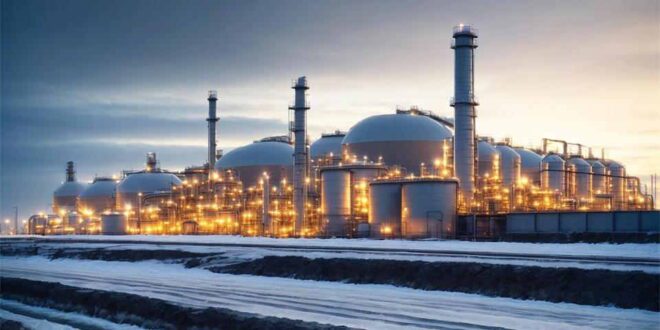Refineries are essentially gigantic chemistry sets, forever rearranging hydrocarbon molecules to squeeze more value from every barrel of crude. Two of the most important rearranging tricks are catalytic cracking and hydrocracking.
While both processes break big, heavy molecules into lighter, more profitable ones, they rely on different catalysts, operating conditions, and end goals. Understanding the contrasts helps refiners decide which process to emphasize when chasing higher margins, better fuel quality, and lower emissions.
Fundamentals of Catalytic Cracking
Catalytic cracking, often executed in a fluid catalytic cracking (FCC) unit, works at temperatures around 500 °C with low hydrogen pressure. A fine, sand-like zeolite catalyst circulates between a riser reactor and a regenerator, constantly shedding spent coke and picking up fresh heat. The process excels at turning gas oils into high-octane gasoline, propylene, and light cycle oil.
Because no external hydrogen is required, catalytic cracking keeps operating costs lower than those of hydrocracking. However, its products carry higher olefin content and sulfur that must later be treated to meet modern fuel specs.
Key Mechanics of Hydrocracking
Hydrocracking is a hydrogen-hungry cousin that blends catalytic cracking chemistry with the deep-cleaning power of high-pressure hydrotreating. Inside tall, fixed-bed reactors, feeds contact a bifunctional catalyst—usually a mix of nickel, molybdenum, or platinum on silica-alumina—at 350 °C to 420 °C and up to 200 bar of hydrogen.
The hydrogen not only breaks carbon-carbon bonds but also saturates the fragments, stripping sulfur, nitrogen, and aromatics in one swoop. The result is a slate of ultra-low-sulfur diesel, jet fuel, and naphtha with excellent cetane and stability, making hydrocracking a go-to for cleaner product mandates and crude flexibility.
Product Yields and Market Flexibility
Because FCC units are gasoline machines by design, refiners that serve gasoline-heavy markets prize their high yield of C5-C12 hydrocarbons and valuable light olefins for petrochemicals. In contrast, hydrocrackers can tilt their product slate simply by adjusting reactor severity and catalyst selection—swinging between middle distillates, naphtha, or even lubricant base stocks.
That versatility commands higher capital outlay and hydrogen costs, yet it shields operators when gasoline demand slumps and diesel or jet fuel takes the spotlight. Many modern refineries hedge by running both units, directing heavier, dirtier cuts to hydrocracking and reserving easier material for catalytic cracking.
Energy Use, Maintenance, and Reliability
Energy intensity is where the two paths diverge sharply. Hydrocracking’s compressors, recycle hydrogen loops, and high-pressure internals devour electricity and steam, raising the unit’s carbon footprint unless paired with efficient hydrogen production. Catalytic cracking, though thermally self-sustaining, loses heat in flue gas and demands meticulous catalyst circulation.
Mechanical reliability also differs: FCCs wrestle with erosion and catalyst fines, while hydrocrackers vigilantly monitor high-pressure metallurgy and hydrogen purity. Equipment choice matters, too—heavy slurry recycle pumps, for example, frequently rely on the robust positive-displacement design of a Viking Pump to keep viscous streams moving without cavitation or flow hiccups.
Conclusion
Both catalytic cracking and hydrocracking transform the same crude puzzle pieces into very different profit pictures. Catalytic cracking offers lower operating costs and plentiful gasoline; hydrocracking delivers cleaner, flexible distillate pools at a premium.
Savvy refinery planners weigh product demand, hydrogen availability, and emissions targets before deciding which molecular hammer to swing—and increasingly, they keep both tools sharp to thrive amid fast-shifting global fuel trends.
 khamush.com Lifestyle | Motivation | Poems
khamush.com Lifestyle | Motivation | Poems



